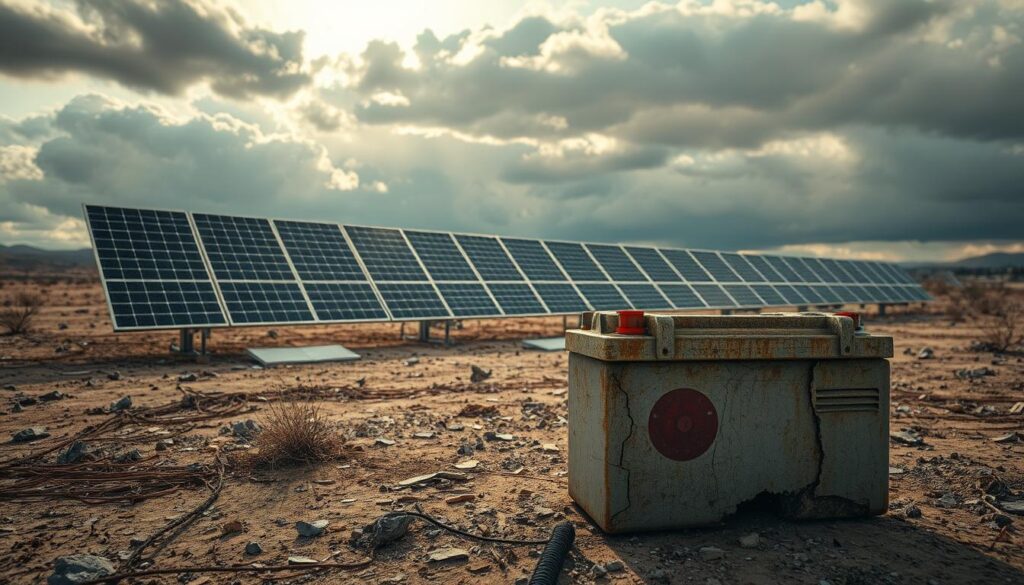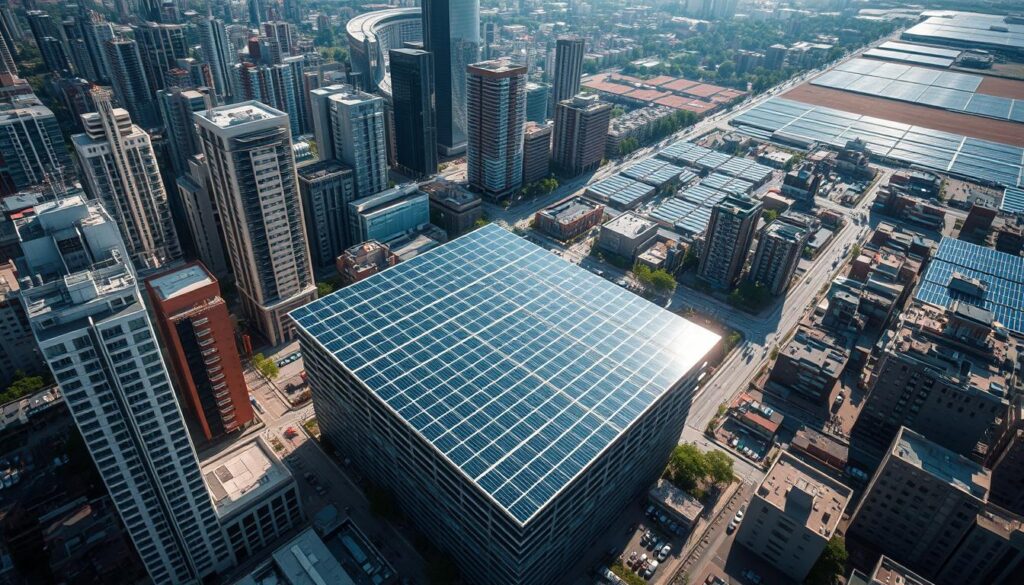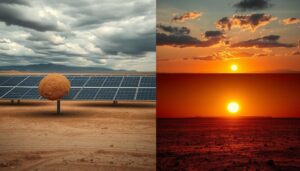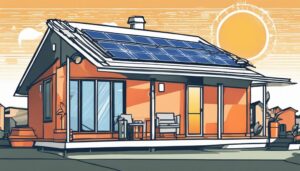While solar power has become an increasingly popular renewable energy source, there is one significant drawback that often deters Australian homeowners from making the switch: the high upfront installation costs. Installing a solar energy system can be a substantial investment, with expenses ranging from the solar panels themselves to the inverters, batteries, wiring, and labor required for the installation process. This financial barrier can be a major hurdle for many Australian households looking to harness the power of the sun.
Key Takeaways
- The high upfront cost of installing solar panels is the biggest drawback for Australian homeowners.
- Solar energy storage solutions like batteries can further increase the initial investment required.
- Solar panels depend on sunlight, making them less efficient on cloudy or rainy days.
- Solar panel production and disposal can have environmental impacts due to emissions and hazardous materials.
- Solar panels require a significant amount of space, which can be a limitation for some homes.
Renewable Energy Source with Limitations
Solar energy is a renewable energy source that taps into the sun’s abundant supply of energy. However, solar panels do have their limitations. They rely on sunlight to generate electricity, and on cloudy or rainy days, or at night, their efficiency drops significantly since they cannot produce energy without direct sunlight. This weather dependence means solar power is not a reliable 24/7 energy source on its own, and requires backup energy storage solutions like batteries to provide consistent power.
Solar Panels Rely on Sunlight for Energy Production
The main drawback of solar panels is their dependence on sunlight for energy production. When the sun isn’t shining, solar panels are unable to generate electricity. This can be a problem during cloudy or overcast weather, as well as at night. While solar panels are an excellent renewable energy source, their reliance on sunlight is a significant limitation that must be addressed through energy storage solutions or hybrid systems that combine solar with other power sources.
| Limitation | Explanation |
|---|---|
| Sunlight Dependence | Solar panels rely on direct sunlight to generate electricity, leading to reduced efficiency on cloudy days or at night. |
| Intermittent Power Supply | The variable nature of sunlight means solar energy is not a consistent 24/7 power source, requiring backup storage or hybrid systems. |
| Weather Sensitivity | Solar panel performance is affected by weather conditions, with reduced output during storms, rain, and other inclement weather. |
“Solar energy is a promising renewable resource, but its reliance on consistent sunlight is a significant limitation that must be addressed through energy storage and hybrid power systems.”
High Upfront Installation Costs
One of the primary drawbacks of solar panels is the high upfront cost of installation. According to industry data, a complete solar setup for a home in Australia can cost around $18,000 on average, even after accounting for incentives and tax credits. This substantial initial investment is a significant barrier for many homeowners considering the switch to solar power.
While solar panels can provide long-term savings on electricity bills, the upfront costs remain prohibitive for some consumers. The average cost of a good 5kW solar system ranges between $5,000 and $7,000, while a 10kW solar system can cost between $10,000 and $13,000. These high initial expenses can deter some homeowners from making the investment, despite the potential long-term benefits of solar energy.
Fortunately, there are various financing options available to help offset the upfront costs of solar panel installation. These include federal and state subsidies, green loans, tying solar investment to mortgages, or leasing panels to reduce the initial outlay. Additionally, certain solar providers may offer $0 upfront solar plans, making the transition to renewable energy more accessible for Australian homeowners.
| Cost Comparison | Average Cost |
|---|---|
| 5kW Solar System | $5,000 – $7,000 |
| 10kW Solar System | $10,000 – $13,000 |
| Complete Solar Setup for a Home | Around $18,000 |
While the solar panel disadvantages of high upfront costs remain a challenge, the solar industry’s continued technological advancements and the availability of financing options are helping to make solar power more accessible to Australian homeowners.
Solar Energy Storage Challenges
One of the key limitations of solar energy is the challenge of storing excess electricity generated by the panels. Solar batteries that can store power for use at night or during low-sunlight periods are an essential component of a solar power system. However, these battery storage solutions can be very expensive, costing upwards of $5,000 depending on size.
Installing solar energy storage batteries also requires the help of a licensed electrician, adding to the overall cost. Early adopters of solar panels were known to link together a chain of lead acid batteries for storage, but newer options like Tesla’s Powerwall utilize large Lithium Ion batteries that are smaller, lightweight, and easier to produce.
Battery Storage Systems are Expensive
The high cost of adequate energy storage remains a significant solar energy cons and drawback of solar power. According to the International Renewable Energy Agency (IRENA), the average cost of installing a residential solar panel system in the United States is around $3.00 per watt. The addition of a battery storage system can easily double the total cost of a solar installation.
Solar energy production also fluctuates seasonally and hourly due to local weather changes, leading to periods of no energy production each day. This intermittency issue further highlights the need for reliable and affordable storage solutions to overcome the problems with solar energy and downsides of solar panels.

“The high cost of adequate energy storage remains a significant drawback of relying solely on solar power.”
What is the biggest drawback of solar panels?
While solar panels have emerged as a promising renewable energy solution, they do come with some significant drawbacks. One of the biggest challenges of solar panels is the high upfront installation cost. On average, installing a complete solar energy system for a home in Australia can require an initial investment of around $18,000. This hefty price tag is a major barrier for many homeowners, making it difficult for them to adopt this technology.
In addition to the high upfront costs, solar panels also face limitations in their energy production capabilities. They rely entirely on sunlight for energy generation, which means they can only produce power during daylight hours. This dependency on sunlight can be a problem in areas with frequent cloud cover or during extended periods of inclement weather. Solar panels are also less efficient in converting sunlight into electricity, with typical conversion rates ranging from 20-25% for the most advanced models.
Another key drawback of solar panels is the need for energy storage solutions, such as batteries, to store the generated electricity for use during non-sunlight hours. The cost of these battery storage systems can be quite high, further increasing the overall investment required for a solar power setup.
Despite these limitations, solar power remains an attractive renewable energy option that can provide long-term cost savings and environmental benefits. Ongoing research and technological advancements are working to address the challenges faced by solar panels, making them more efficient, cost-effective, and accessible to a wider range of homeowners and businesses.
As the solar industry continues to evolve, it will be crucial for policymakers, researchers, and consumers to work together to overcome the drawbacks of solar panels and unlock the full potential of this clean energy source.
Space Requirements for Solar Panel Installation
One of the notable limitations of solar panels is the significant space required for their installation. Whether it’s on the roof of a residential property or a commercial building, or on a plot of land, the area needed to accommodate enough solar panels to generate meaningful electricity can be a significant challenge.
Limited Roof Space or Land Area
Solar panels and their associated equipment, such as wiring and inverters, require substantial roof space or land area to be effective. The standard residential solar panel is typically 1.7 meters tall by 1 meter wide, generating between 350 to 500 watts of power. To power a typical home, you may need 15 to 19 of these panels, occupying 260 to 340 square feet of space.
For commercial installations, larger 72-cell solar panels measuring around 2.1 meters tall by 1.1 meters wide are often used, with output ratings between 415 and 450 watts. These panels are arranged in a 6 by 12 grid, further increasing the space requirements.
In densely populated areas or on buildings with limited roof space, accommodating the necessary number of solar panels can be a significant challenge. Homeowners and businesses may be constrained by the available square footage, preventing them from meeting their full energy needs through solar power.

Advancements in solar technology, such as higher power output per panel and the use of half-cell panels, have helped to reduce the overall space requirements. However, the space limitations remain a notable hurdle in the widespread adoption of solar energy.
Environmental Impact of Solar Panel Manufacturing
While solar energy is a clean, renewable power source, the manufacturing process for solar panels does have some environmental impact. The production of solar panels involves the mining and use of materials like silicon, as well as the creation of greenhouse gas emissions. Studies have shown, however, that solar panels typically offset these environmental costs within one to four years of use through the clean energy they generate. Still, the environmental effects of solar panel manufacturing remain a drawback that must be considered.
Solar production facilities require a significant amount of energy to operate, with much of the energy used for melting silicon sourced from coal burning, particularly in China. Monocrystalline solar panels, the most common type, have an energy conversion efficiency ranging between 19% and 22%. The manufacturing process for these panels produces the highest emissions compared to other types. Polycrystalline solar panels, made by melting silicon crystals together, require some electricity for manufacturing but less than monocrystalline panels. Thin-film solar panels, made from materials like amorphous silicon, cadmium telluride, or copper indium gallium selenide, typically have a smaller carbon footprint compared to other types but are created from extremely toxic materials that can be harmful if mishandled.
Solar panels are produced globally, with China being the primary producer followed by the U.S. and Europe, leading to emissions from transportation of parts for panel production. The carbon footprint of solar panel production, although not extensively researched, is significantly lower than traditional energy production methods such as oil drilling, fracking, or coal mining. The Solar Energy Industries Association (SEIA) aims for solar energy to contribute to 30% of energy generation in the U.S. by 2030, potentially resulting in over a billion solar panels in use, emphasizing the need for improved solar panel recycling mechanisms.
Despite the environmental challenges related to solar panel production and waste management, solar energy remains a superior option to non-renewable energy sources, significantly reducing emissions and playing a crucial role in slowing climate change.
Negative Environmental Impacts of Solar Panels
- Solar panels require a significant amount of energy up front to produce, with approximately 60% to 70% of the energy being used during the manufacturing process.
- Chemicals used in the manufacturing of solar-grade silicon pose potential environmental hazards, with hazardous chemicals being typically involved in semi-conductor processing.
- Concerns arise regarding the recycling and disposal of solar panels as they need to be replaced, and improper disposal could lead to recycling-related issues in countries without robust e-waste disposal systems.
Chemicals, Recycling, and Disposal of Solar Panels
The standard encapsulation of silicon wafers in solar modules with ethylene vinyl acetate (EVA) provides protection against leaching under normal operational conditions. The recycling of solar panels is not yet a widespread or economically scalable solution despite the environmental concerns surrounding disposal.
Paths Forward for Environmental Impact Mitigation
- Large-scale solar panel recycling plants exist but are not as prevalent as necessary, with an expectation of gradual growth over time.
- Implementing fees on solar panel manufacturers or mandating recycling programs could aid in improving solar panel recycling economics.
- The development of alternative manufacturing methods to reduce the use of chemicals in solar panels is already underway, though the timeline for commercialization remains uncertain.
Environmental Impact of Solar Panel Manufacturing
Solar panels have components like an aluminum frame, silicon cells, copper conductors, and polymer or plastic-based backsheet and film. The manufacturing of solar panels involves mining raw materials like quartz for silicon, aluminum, copper, and silver, with energy-intensive processes for their extraction and processing.
Carbon Emission Intensity of Solar Panels and Other Fuels
| Energy Source | Carbon Emission Intensity (gCO2/kWh) |
|---|---|
| Solar Panels | 40 |
| Coal | 1,000 |
Solar panels exhibit a lower lifetime carbon emission intensity of approximately 40 gCO2/kWh compared to coal’s emission intensity of around 1,000 gCO2/kWh. The harmonized data from life cycle assessments indicates that solar panels require about 60% to 70% of their energy upfront, 25% during operation, and 5% to 20% post their productive life. With solar panels today being nearly 50% more efficient than in past assessments, they are more effective in generating clean energy relative to the emissions produced during their manufacturing and operational life.
Solar Panel Efficiency and Lifespan
While solar energy is a renewable and eco-friendly power source, the efficiency and lifespan of solar panels are crucial factors to consider. Modern solar panel technology has improved significantly, but panels still only convert around 15-20% of the sun’s energy into usable electricity. This relatively low efficiency means more solar panels are required to meet energy needs, adding to the overall cost of a solar power system.
Furthermore, the average lifespan of solar panels is typically 25-30 years. After this time, their performance begins to degrade, with panel efficiency declining by about 0.5% per year on average. Replacing aging solar panels can become an additional long-term expense, as solar inverters generally last 10-15 years and cost $1,000 to $2,000 to replace.
Despite these limitations, advancements in solar panel technology are continuously improving efficiency and longevity. Monocrystalline panels, for example, can degrade at a rate as low as 0.4% per year, while Tier One panels have a degradation rate of just 0.3% annually. With proper maintenance and the use of high-quality equipment, solar panels can maximize their efficiency and lifespan, helping to offset the solar energy cons and problems with solar energy.
“Solar panels typically experience a declining efficiency at around 80% of original capacity after 25 years.”
In conclusion, while the efficiency and lifespan of solar panels pose some solar panel limitations and solar power drawbacks, advancements in technology and proper maintenance can help mitigate these issues with solar panels. By understanding the capabilities and constraints of solar power, homeowners and businesses can make informed decisions about adopting this renewable energy source.
Challenges of Solar Panel Integration and Relocation
Integrating solar panels into existing buildings and structures, as well as relocating them, can present significant solar panel limitations and issues with solar panels. Tying the panel wiring into a home’s electrical system requires specialized expertise that many homeowners do not have. Additionally, uninstalling and moving an entire solar power system can be a complex, time-consuming, and expensive process.
One of the key solar panel challenges is the difficulty in seamlessly integrating solar technology into existing infrastructure. Homeowners may face compatibility issues, and the process of connecting solar panels to the electrical grid can be daunting for those without the necessary technical knowledge. This can lead to downsides of solar panels and deter some individuals from adopting solar energy.
Another issue with solar panels is the relocation process. Dismantling and moving an entire solar power system can be a significant undertaking, often requiring the expertise of professional installers. The solar panel cons associated with this process include the time, cost, and potential for system damage during the move.
These integration and relocation challenges are important considerations for those contemplating a switch to solar energy. Homeowners must carefully weigh the benefits of solar power against the limitations of solar panels and the potential challenges they may face during the installation and relocation process.
“The integration of solar technology into existing infrastructure is a significant challenge that must be addressed to facilitate widespread adoption of renewable energy solutions.”
Conclusion
While solar power offers numerous benefits as a renewable energy source, it is not without its drawbacks. The biggest limitation of solar panels is the high upfront cost of installation, which can be a significant barrier for many Australian homeowners and businesses. Other key solar panel limitations include the panels’ reliance on sunlight, the expense of energy storage solutions, space requirements, environmental impact of manufacturing, and challenges with integration and relocation.
Despite these solar panel disadvantages and solar energy cons, solar power remains an attractive option for those looking to reduce their carbon footprint and energy costs in the long run. The solar power drawbacks and issues with solar panels must be carefully considered, but the potential benefits, such as lower utility bills and increased property value, can make solar a worthwhile investment for many Australian consumers.
As solar panel challenges and problems with solar energy are addressed through ongoing technological innovation and supportive policies, the downsides of solar panels may become less significant. Ultimately, weighing the pros and cons of solar power is essential when deciding if it is the right choice for your energy needs and environmental goals.



